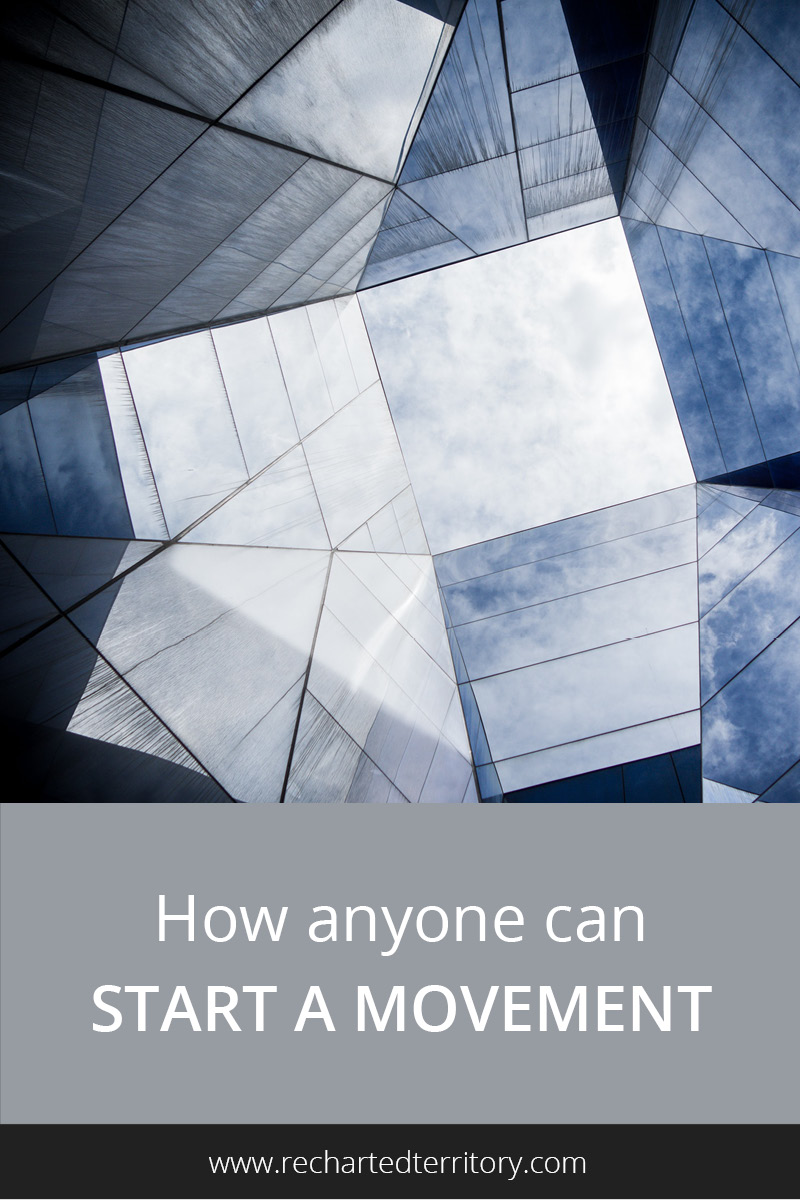

Note: Every month we post an article inspired by a book on the RT reading list, with takeaways plus tips for applying the ideas in our daily lives transforming complex systems. You can find all of the reading lists, books, and links to the related articles here.
While we would love to influence complex change, we don’t always have a position of authority or the ability to direct people’s actions.
And even if we do, we might feel like we’re trapped in a box on an org chart. Embedded in an existing structure designed by others, with boundaries around what we can do.
In my experience working with large organizations to enact complex change, the problem isn’t that individuals don’t have ideas about what to change.
It’s that they struggle to find ways to foster and grow their ideas. Especially if they’re working in an environment where everyone is either pushing their own agenda or burnt out from trying.
That’s why I think that Nilofer Merchant’s book, “The Power of Onlyness” from the RT 2018 reading list is worthwhile to share, read through, reflect on, and translate into action.
In the book, she discusses how,
“through the power of onlyness, an individual conceives an idea born of his narrative, nurtures it with the help of a community that embraces it, and, through shared action, makes the idea powerful enough to dent the world.”
– Nilofer Merchant
Her advice maps well to the three categories we discuss on this blog:
- Grit & Productivity: The internal life of a change agent
- Leading Change: Scaling your impact by guiding others
- Systems Analysis & Design: Building systems that create great outcomes even when you’re not around
The internal life of a change agent
Onlyness means making a difference thanks to what makes you different, instead of how well you fit into the status quo.
One of the first steps for identifying your brand of “onlyness” is to consider what’s unique about your experiences and how they’ve shaped your worldview. How could you add something different to conversations about topics you care about? Even if you don’t feel like an “expert”?
What status quo titles, labels, or conventions are limiting your thinking about what’s possible? What’s “normal” in your organization or industry that could be constraining the options you’re considering?
You don’t need to know what your purpose is right away. List out some questions that you’re curious to explore. Then take small steps to learn, apply what you’re learning, and eventually build a proof of concept.
Your own clarity about your onlyness and purpose will form as you take action and reflect on the results. And the body of work you build over time will clarify your mission to others and attract like-minded people.
Going down this path may feel risky and uncertain. Make space for the pursuit, by investing time, finances, and energy, even if it’s unclear how everything will turn out.
Merchant also recommends focusing on the work and the purpose, not yourself and your ego. You’re more likely to stay committed, contribute to the purpose, and attract others to join you.
“You’re standing in a spot in the world that only you stand in, a function of your history and experiences, visions, and hopes. From this spot where only you stand, you offer a distinct point of view, novel insights, and even groundbreaking ideas. Now that you can grow and realize those ideas through the power of networks, you have a new lever to move the world.”
– Nilofer Merchant
Scaling your impact by guiding others
As you clarify your own viewpoint, if you want to scale, the first step is to signal your passions and look for others with similar interests.
With so many online tools and events now, it’s easy to find ways to signal your interests. Consider how your profiles, the updates you post, content you write, events you attend, and roles you take on express your point of view.
When you find people with similar interests, start by forming a small group. Help the group frame a common purpose, preferably advocating for instead of against something.
Supporting a vision will give you more clarity around the next steps to take. Rather than encouraging anger or frustration around problems in the current system.
While you craft that common purpose, don’t forget to celebrate other people’s onlyness. By getting to know about all aspects of their personality and life instead of just their title or labels that society would assign.
By encouraging this practice in the small group, you can grow a community where everyone’s onlyness is valued.
As you expand beyond that initial group, pay attention to current beliefs and how ideas are framed. You can’t direct people, but you can disturb their thinking about the status quo.
“Challenge the idea without challenging the worth of the people involved.”
– Nilofer Merchant
People are more likely to take ownership of a cause when you take disparate facts that they may or may not be aware of and package the information in a way that highlights the importance and urgency of making a change.
And importantly, in a way that respects their own onlyness and values but disrupts how they currently view the world.
With that approach, they will more likely have an internal debate around whether to change their actions given new information. Instead of an external one where they defend their current position.
Designing that frame and populating it with key facts is the work for change agents. It may take a few iterations to land on a combination that inspires action.
When you’ve found a message that resonates and the community grows, expand from your strong ties to weak ties. Engage with this larger group of people by highlighting something specific that individuals can take action on.
Building systems that create great outcomes even when you’re not around
How can we design systems and organizations that promote the power of onlyness? That recognize individuals and help them combine talents and energy to make something bigger happen? Merchant shares some examples that offer ideas.
You could be like the company Ushahidi, and encourage everyone to learn and embody the organization’s mission as soon as possible. They have new hires present the company mission during conference talks in their first few weeks.
To expand the pool of people who understand what you’re working on and can contribute, try removing jargon in your discussions about the problem and potential solutions.
Reconsider your assumptions about who can contribute to the solution. Do they necessarily need to have certain credentials? A specific background? How might a different perspective be beneficial? Could you reframe the problem or break it apart into sub-problems?
Provide tools that people need to solve problems they see and contribute their unique perspective and talents, like software, financing, or authority to act. At the same time, remove friction and barriers to collaborating. Make it easy for people to seamlessly communicate and access shared knowledge.
Clarify outcomes, constraints, and team processes and rules so people can act independently without going off in different directions.
And finally, identify and support people who can act as “trust bridges.” These are trusted figures with strong networks who can maintain credibility and cohesion as the group figures out how to work together and evolve through growing pains.
“Create and maintain the conditions for people to figure out what they need to know, so they feel that ownership and responsibility to do it themselves.”
– Nilofer Merchant
The concept of “onlyness” takes advantage of both the benefits of scale and the value that each person on the planet can add. In a way that outlines how one person can end up influencing large changes. I encourage you to check out the book for more examples, insights, and tips.
How will you apply the ideas from this book? In which of these three areas do you feel stronger? Which do you struggle with?